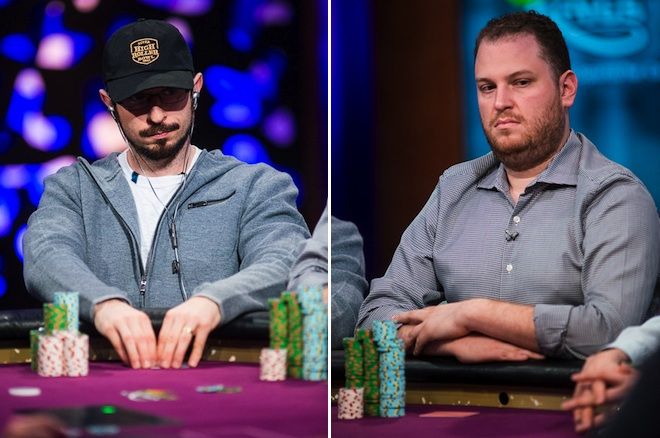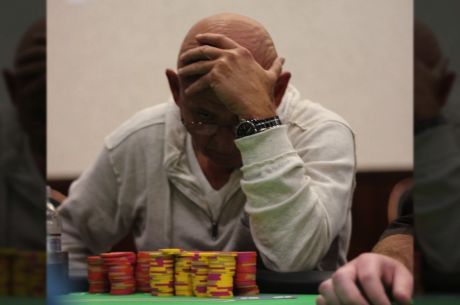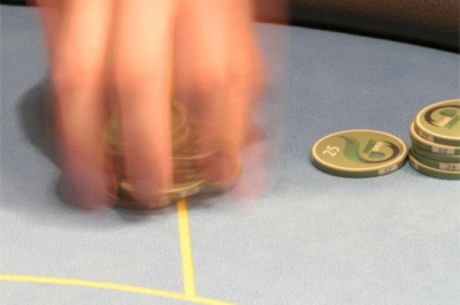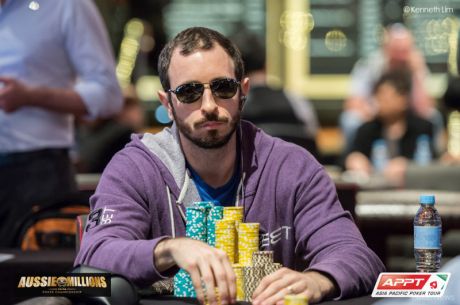The Importance of Limping Big Hands from the Small Blind

Covering live poker tournaments for a living affords me the opportunity to see countless thousands of hands played out, many of which offer interesting and potentially valuable insights into how players �� both amateurs and professionals �� play the game. In this ongoing series, I��ll highlight hands I��ve seen at the tournaments I��ve covered and see if we can glean anything useful from them.
The Scene
This summer, I had the pleasure of covering the Super High Roller Cash Game, a nosebleed affair involving some of the best and/or most affluent poker players on the planet. Sent back to the World Series of Poker beat afterwards, I did not get to return days later for the $500,000 Super High Roller Bowl, which was covered by my esteemed colleagues. That��s the setting for this week��s hand, which I happened to catch on recent TV coverage of the event.
One of the biggest tournaments in recent memory, the Super High Roller Bowl drew 43 of the game��s best and wealthiest, with the titanic buy-in creating a suitably enormous first-place prize of $7,525,000. At the point this hand took place, three of the game��s best �� Scott Seiver, Brian Rast, and Connor Drinan �� were left battling, with substantial money jumps of about $2 million after each of the final two eliminations.
The Action
Play had recently moved to Level 22 (60,000/120,000/20,000). Rast and Seiver were playing fairly deep with about 10 million and 7 million, respectively, while Drinan lagged behind with about 4 million. Drinan got out of the way from the button in this hand to leave the big stacks to do battle, and battle they did.
Things started slowly enough as Rast completed from the small blind, but Seiver popped it up with a big raise to 420,000. Rast came back over the top for 1.13 million, and Seiver went into the tank for a while before moving all in for 7.195 million total. Rast immediately called with K?K? and had Seiver��s 8?8? crushed.
Unfortunately for Rast, the board ran out 8?10?Q?4?2?, giving Seiver a winning set of eights and allowing him to fade Rast��s backdoor flush draw.
Concept and Analysis
Blind battles can be some of the most interesting and fun hands in poker. They usually involve two players going at it with the widest ranges they��ll play, given that everyone else in the hand has folded to leave a default heads-up match. In cash games they don��t come up as often, since many players will just chop. But that��s not an option in tournaments, making the blind-vs.-blind hand an important part of tournament play.
In this hand, Rast picks up a monster when he sees kings in the small blind. Whereas many players would immediately raise in an effort to build the pot and protect their hand, Rast elects to just call.
When Seiver raises, Rast springs the trap, waking up with a reraise to just short of three times Seiver��s bet. Holding two eights, Seiver is in a tough predicament. You��re never thrilled about getting 60 big blinds in with eights, but his options are pretty limited. Just calling isn��t a great option, as most flops will include an overcard to his pair and he will be left guessing at that point. He has to decide whether to go with his hand now.
Rightly figuring that two eights are usually going to be best in a blind battle, Seiver shipped it, only to be shown the kings.
Many players like just to call from the small blind with a wide range of hands, and who can really blame them? You��re getting a great price �� at least 3-to-1 depending on antes �� and you have just one opponent who is holding any two. In the big blind, many players who see a call from the SB like to bump it up. Again, who can blame them? They know they are facing a very wide range of hands and they��ll have position the rest of the hand.
Thus, it��s important occasionally to limp some very strong hands from the small blind as part of a balanced overall strategy. Otherwise, it��s just too easy for the player in the big blind to exploit you with raises and then taking down pots postflop with continuation bets on the occasions when you miss (which is more often than not). When players see you do this, they will be far less likely to raise your small blind limps in the future, enabling you to see more cheap flops and use pot control when out of position.
This hand seemed to be an incredibly costly beat for Rast at the time. It reduced him to the shortest stack, while Seiver appeared to be in complete command with about two-thirds of the chips in play. Rast shook the bad luck off, though, and got the last laugh as he bested Seiver heads-up to take down the $7.525 million first prize.
Want to stay atop all the latest in the poker world? If so, make sure to get PokerNews updates on your social media outlets. Follow us on Twitter and find us on both Facebook and Google+!









